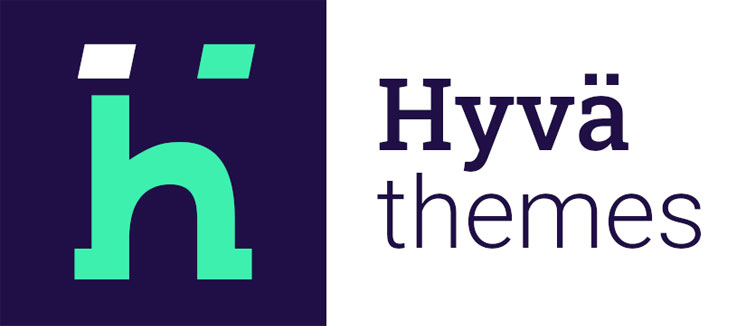Magento frontend development has such a large and diverse community, along with plenty of framework options and extensions to choose from. Each has their pros and cons and a full comparison will be done on a later post.
Customers and clients are king. Content attracts and user experience solidifies engagement and generates conversions. Choosing the right frontend development framework is crucial and never cookie-cutter.
Magento Luma comes bundled, so naturally developers chose that framework for starting points to 99% of projects over the past decade.
It may make sense to continue to use Luma – it may not. Schedule your technical audit to address this crucial consideration and receive informed recommmendations. Until then, here’s as cookie-cutter as it gets:
1. Hyvä Theme

Willem Wigman (a Dutch Magento developer) created Hyvä as a Magento frontend framework to remove all the complexities of the Magento Luma theme. Hyva further streamlined maintaining all the positive aspects and removing all negative aspects of Magento Luma that would normally result in issues/inefficiencies.
Hyvä tackled the performance issues and provides a better experience to developers and end-users:
Pros
- Reduced complexity: Developer-friendly with a simple/smooth UI
- Fewer dependencies: Fewer dependencies/libraries/functions
- SEO-friendly: Search engine optimized OOTB – higher visibility/traffic
- Speed and Performance: Regularly updated – highest performance
Cons
- Cost: Initial Cost (1,000+ USD) and recurring cost depending on version and features. Like all frameworks, customization expense.
- Compatibility Issues: Removing dependencies comes with a tradeoff – popular third-party extensions still rely on them (incompatible)
- Design: Complex designs and animations may require a different recommendation on framework
- No Adobe Commerce Support: Hyvä theme only supports Magento 2 open-source, and it isn’t compatible with Adobe Commerce. This is the deciding factor between #1 and #2.
2. Adobe Storefront
Adobe Storefront is Adobe solution for a Hyva alternative on Adobe Commerce. Using headless technology, the frontend and backend applications are decoupled and developed separately using different technologies. Further, with Adobe’s recent launch of Adobe Commerce as a Cloud Service, the backend maintenance, installation and even setup is eliminated. This would/could be the last frontend framework you’ll ever need to decide on.
Pros
- Future Proof: Adobe Storefront is designed to be the only frontend framework developed from the beginning to be truly interchangeable between Adobe Commerce/BigCommerce/Shopify
- Integrated Omnichannel: Adobe offers, at cost, a true omnichannel and integrated approach to selling at a global and enterprise scale. Create your buffet based on budget.
- Better flexibility: Customize your UX with no limitations.
- Faster scaling: Separate from the back end make scaling up an effortless task.
Cons
- Cost: Inherently, decoupling the frontend and backend requires additional cost to run the website. Additional services and development work takes place and teams need to be trained in different approaches to security, updates, design templates, etc. Alternatively, when you weight the cost of managing/maintaining backend Adobe Commerce vs. SaaS, this con might even be a pro..
- Effort: Effort spent developing and managing a headless website will always equate to the complexity of your implementation – regardless of frontend framework.
- Performance: will be as good as the developers implementing the framework and functionality
2. Headless Technology
Frontend and backend applications can be decoupled decoupled and developed separately using many methods – Vue, React, etc.. – and can be connected via GraphQL to Adobe Commerce or Magento Community. This approach provides enhanced flexibility and scalability and ultimately, an enhanced customer experience.
Pros
- Great CX: You can deliver a personalized experience to consumers using headless. Because altering the CX takes less time, your team can customize the experience for different consumer segments.
- Flexibility: Using the headless technology, you can alter your front end whenever you want to provide a customized UX.
- Faster scaling: Scaling a business is easy with headless because the front end is separate from the back end.
Cons
- Expensive: Decoupled frontend and backend means different hosting and maintenance services, resulting in an additional cost to run the website. Also, you will have to train your team to maintain the system for security, updates, design templates, etc.
- Effort: You will need to spend a lot of effort developing and managing a headless website, and still, performance is not guaranteed.
Which is Best?
There is no cookie-cutter approach. For 15 years, we’ve assisted clients in defining business requirements and providing solutions based on those requirements. Here’s as cookie-cutter as we can get without discovery:
Luma is a good option for stores requiring:
- minimal customization before launching an eCommerce store
- reduction in third-party extensions just to keep up with modern standards and performance
- simple and clean designs and a smaller developer community for customizations
Adobe Storefront is a good option for stores requiring:
- Adobe Commerce and future-proof transitions to BigCommerce/Shopify..
- Minimal complexity/codebase and highest performance
- An entire team of dedicated Adobe support staff in addition to an entire community of highly-capable developers
Headless technology is best if you are a content-driven brand and intend to integrate a content management solution other than Adobe Experience Manager. If you want to provide a highly-personalized customer experience and integrate technologies like AI or AR, it is a perfect choice for you. Also, for brands desiring higher scalability, headless is an ideal choice.
Everything depends on your requirements and your choice of solution implementation teams. Ready to move forward? Please contact us to begin discovery and or a technical audit – we look forward to it!